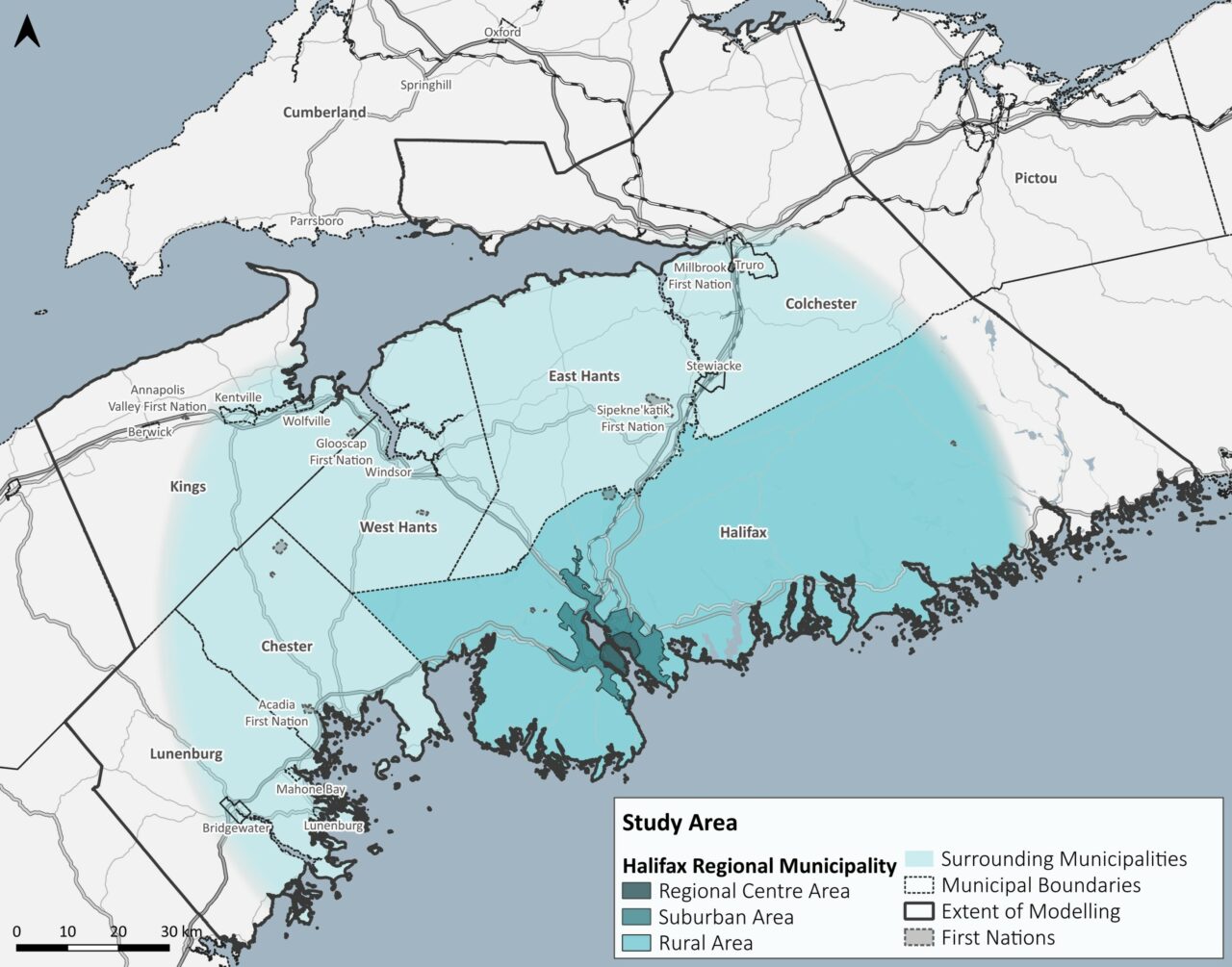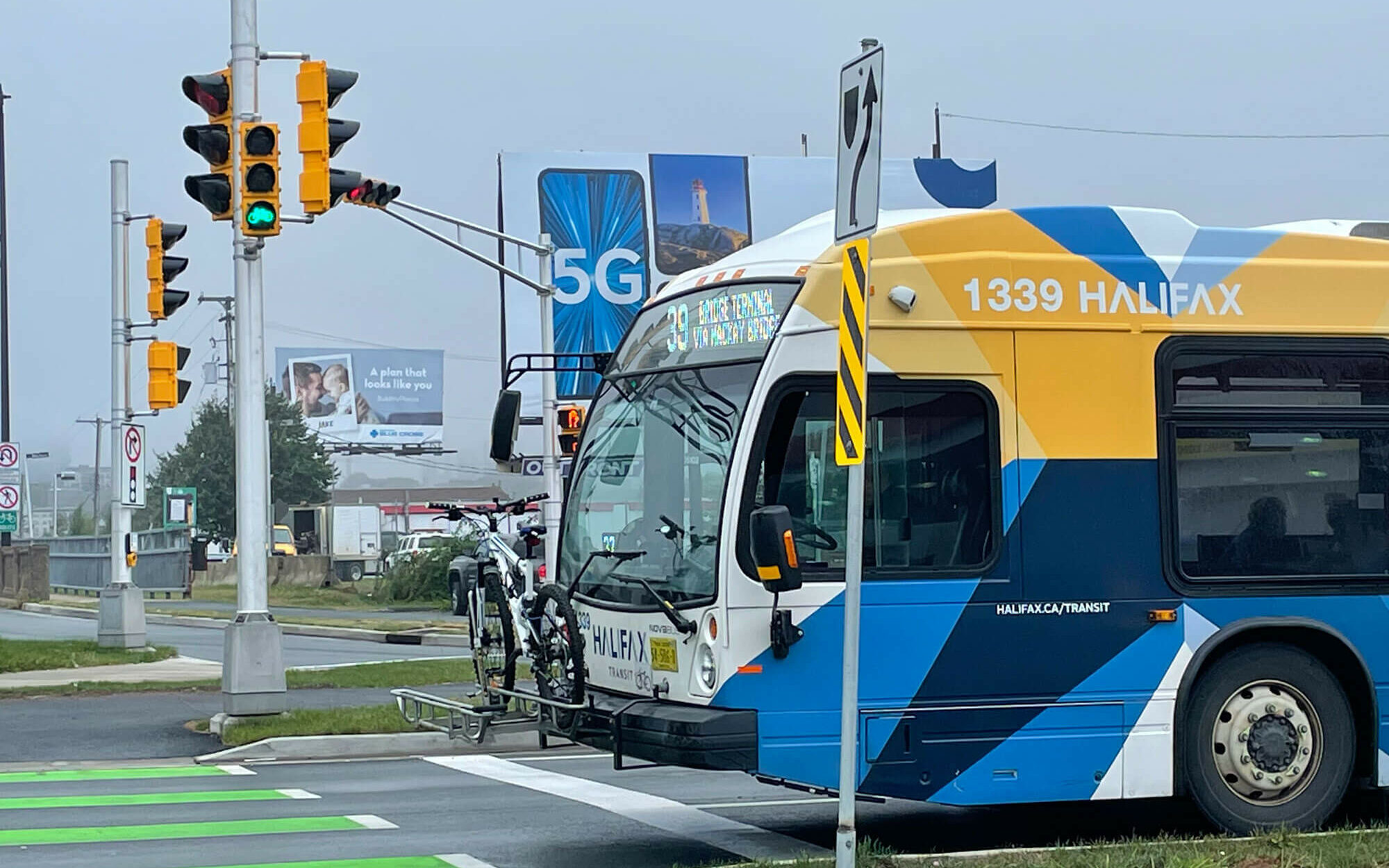Plan Area

The above map shows the areas included in the Regional Transportation Plan. The focus is on Halifax Regional Municipality, but the plan will also include communities that are around a one-hour driving time from Halifax as they have also experienced growth.
The study area includes most of Nova Scotia’s population and one of the most important economic hubs in Atlantic Canada.
The study area includes 14 municipalities outside of HRM:
- Municipality of the County of Colchester
- Municipality of the County of Kings
- Municipality of the District of Chester
- Municipality of the District of Lunenburg
- Municipality of East Hants
- Town of Berwick
- Town of Bridgewater
- Town of Kentville
- Town of Lunenburg
- Town of Mahone Bay
- Town of Stewiacke
- Town of Truro
- Town of Wolfville
- West Hants Regional Municipality
As well as five First Nations:
- Acadia First Nation
- Annapolis Valley First Nation
- Glooscap First Nation
- Millbrook First Nation
- Sipekne’katik First Nation
Vision
Nova Scotians have a safe, efficient, equitable, and resilient regional transportation system. Our people and communities are healthy, connected, and prosperous, powering a strong regional economy
Goals
What do we want the plan to achieve?
Strengthen regional connections
Travel between communities and to regional destinations, regardless of mode or trip purpose is safe, easy, and enjoyable.
A realistic range of affordable and sustainable transportation options are available that lower household costs, emissions and car dependency, reduce fatalities and injuries, and enhance social connectivity.
Enable efficient and sustainable goods movement
Essential corridors for moving goods locally and regionally are developed, preserved, and well-maintained to enable the reliable movement of goods and support economic development and trade.
Lead strategic investments, alignment, and implementation
Infrastructure decision-making and service delivery is cost effective, integrated, and efficient. Actions included in the plan are ambitious yet achievable, maximizing their potential to be funded and built.
Coordinate and collaborate on sustainable land use
All orders of government work to align transportation and land use across departments and initiatives. The regional transportation system supports environmentally and fiscally sustainable development, recognizing the different needs of health urban, suburban, and rural communities.
Develop a future ready regional transportation system
The transportation system is resilient and adaptable, able to respond to changing trends, uncertainty, and climate change. There is consideration for technological advancements, societal changes, and the long-term needs of the system.
Principles
All aspects of the planning process are guided by the below.
Accessibility
Provides access to affordable, welcoming, inclusive, and efficient transportation essential for communities to thrive. The design of the system aligns with the province’s goals for an accessible Nova Scotia by 2030.
Collaboration
Integrates a diverse range of ideas to advance regional transportation solutions that address challenges and maximize opportunities.
Equity
Addresses transportation needs for underrepresented and underserved communities so all Nova Scotians can travel easily throughout the region.
Resiliency
Prioritizes solutions that reduce the transportation system’s vulnerability to climate impacts and enhances the ability to recover from service disruptions.
Sustainability
Prioritizes transportation solutions and coordinated land use that eliminate greenhouse gas emissions to meet the province’s net zero target and protects environmental, agricultural, and cultural assets.
Well-being
Better connections for Nova Scotians to one another and the goods, places, and services they need to help build prosperous, safe, and healthy communities.
Project Timeline
- Spring 2023
-
Background Assessment
Stage 1 Engagement
- Spring-Summer 2023
-
Background review
- Fall 2023-Winter 2024
-
Determine Goals & Values
Scenario Planning & Analysis
Stage 2 Engagement - Spring-Summer 2024
-
Detailed Analysis
Implementation Planning - Summer-Fall 2024
-
Draft Plan
Stage 3 Engagement - Fall 2024
-
Final Plan

Scenario Planning
The Regional Transportation Plan is focused on the long-term vision for the regional transportation system. Traditionally in long-term planning, past trends would be used to predict future transportation needs. This approach assumes the future will be like the present.
But, the world we live in is becoming more uncertain (as recent years have demonstrated), quickly outdating plans that have used this approach.
The exploration of different scenarios is a proven method to help address this uncertainty. Watch the video to learn more.
Travel Demand Model
The travel demand model simulates travel behaviour and provides us with information needed for decision-making. A regional-scale travel demand model can examine the interactions of population, employment, land use, and mobility options and allows us to test different possible futures, quantify the need for travel, and assess the utility and scale of the different modes of transportation that will be required to serve the region in the future.
HRM currently maintains a travel demand model, but it is limited in geographic coverage and functionality. To provide a more flexible, realistic, and policy-sensitive tool for use in the creation of the Regional Transportation Plan and other major ongoing and upcoming projects, the JRTA and HRM are partnering to create a new activity-based travel demand model.

The objectives of the travel demand model are to:
- Create a new activity-based travel demand model to support a wide range of land use and transportation planning and engineering projects in the region.
- Update HRM’s existing travel demand model to act as an interim tool to support ongoing and upcoming projects while the activity-based model is under construction.
The creation, calibration, and validation of a new travel demand model is a complex technical exercise. Attempting to represent the daily travel decisions for a rapidly growing region of 600,000+ people requires a significant amount of data, time, and technical work to understand their habits, choices, and preferences well enough to be able to examine not only how things are operating today and why, but how the answers to these questions might change in the future.
